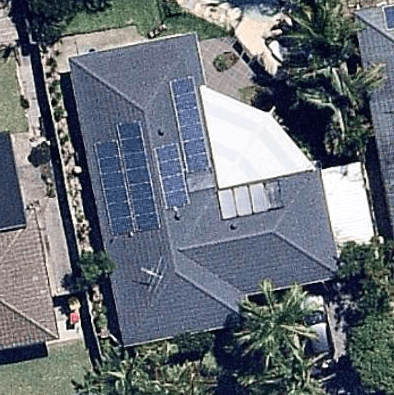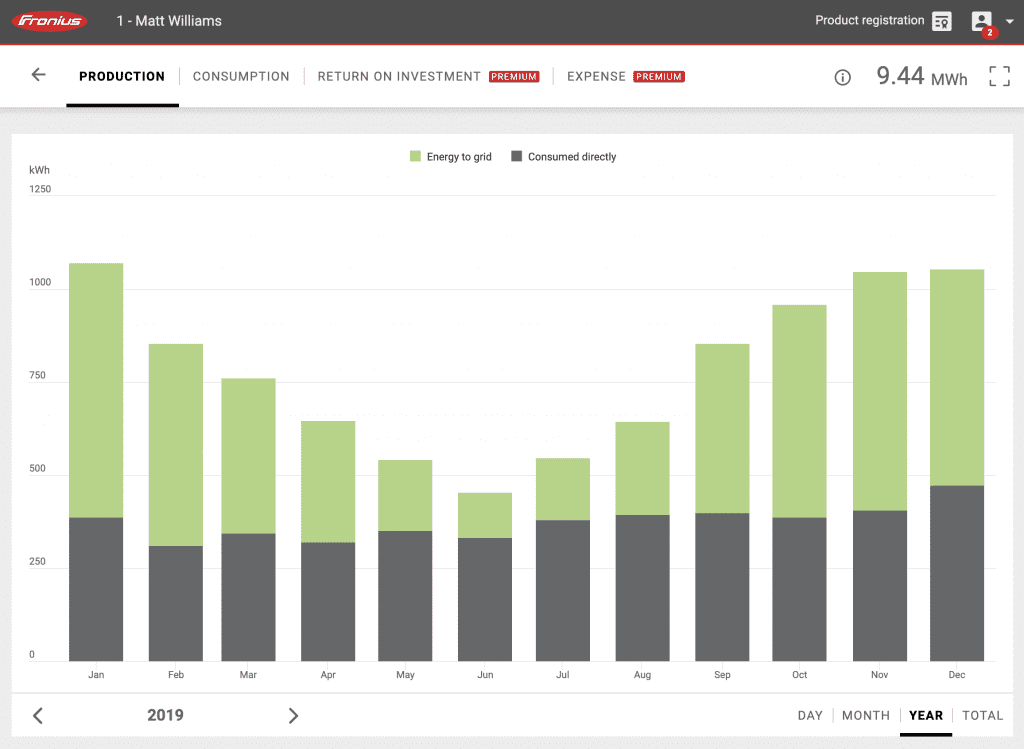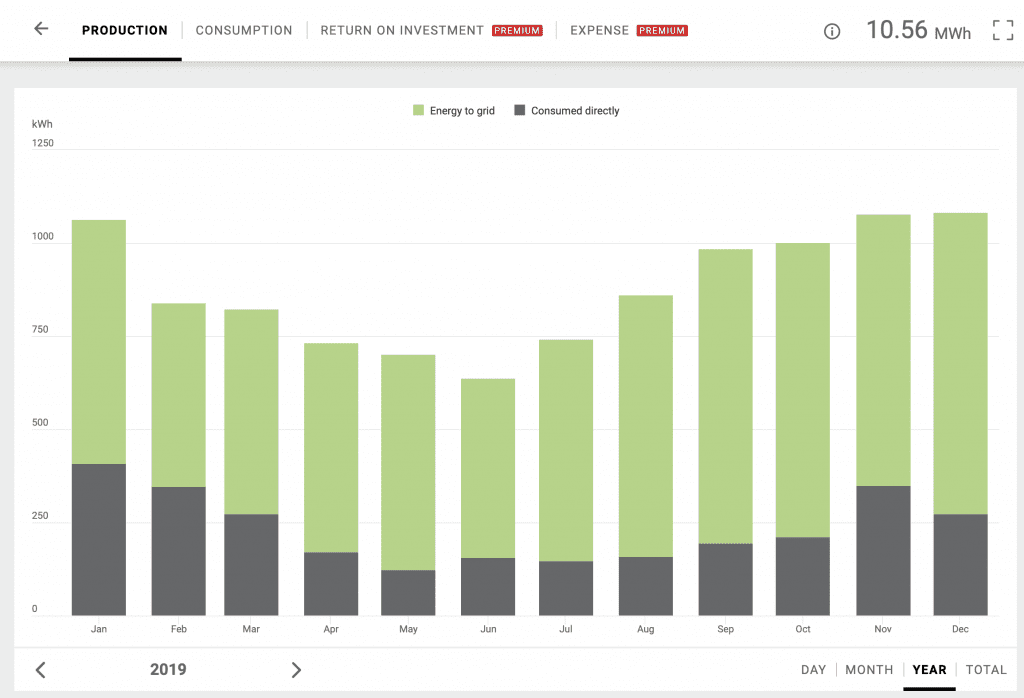Do solar panels work better in summer, when it’s hot?
This is a question we get asked quite frequently so we wanted to address it in this short article which covers how solar panels work in the winter, and how solar panels work in the summer.
Solar panels degrade in the heat, so on very hot days they will be less effective. However, in summer months we have longer days which means more sunlight. For this reason, your solar production will be higher in summer.
In addition to this, there are also other factors to consider such as orientation and tilt angle.
Simply put, the sun is higher in the sky in summer, and therefore tracks more directly over-head. In the winter, the sun is lower in the sky. Because of this, solar panels that are installed on very slightly angled roofs, or totally flat roofs, will perform even better in summer, and even less in winter.
Conversely, solar panels installed at a steeper angle will do better in winter, and then less in summer, as the sun is shining more directly onto them while it is lower in the skyline. Furthermore, because the sun is lower in the sky during winter, any panel installed on roofs that are pitched even slightly south, will suffer from more losses.
Let’s take a look at East – West first:
Let’s take a closer look at this by checking some live data from a solar array installed in Brisbane, QLD. The roof image and chart below shows real-life data collected from our General Managers solar install. This system is a 6.555kW array using 23 x 285w Q Cell Solar panels and a Fronius Primo 5 inverter.


This array is split East – West with 10 panels facing a few degrees off West, and the other 13 panels facing a few degrees off East. Please note, this means the Eastern array is orientated slightly to the South, which means winter production will be lower on this array due to the sun being lower in the sky.
The lowest month of production was June with 455.5kWs of solar production. Compare this to the best performing month of January where the solar production was 1070.62kWhs. This is an increase of approximately 135% form the lowest month to the highest month for solar production.
A North facing comparison:
The data below is from a 6.51kW installation in Brisbane with 21 x 310w Q Cell panels. All 21 panels are installed North at the same angle as the East – West example above (25 degrees). You can see the solar production is more evenly spread out.

The lowest month is still June with 638.99 kWhs, and the highest is still January with 1063.73 kWhs. The difference here is that the increase in summer compared to winter is a bit less than 70%. Compare that to the East – West array above which was 135% increase and you can see there is quite a big difference.
It is also worth having a look at the overall solar production which was 9.44MWh for the East / West array and 10.56MWh for the norther array. That’s a difference of 1.12MWh in a year. 1.12MWh is 1,120kWhs which is worth between $156.80 – $280 depending on whether you sell this back to your energy retailer or use it at home.*
So, both of these systems produce way more energy in summer, and the East – West array suffers more in the winter. As mentioned above, this is partly due to the Eastern array facing slightly South.
Other considerations:
Solar will almost always produce more energy during summer months due to the longer days. As pointed out above some arrays will suffer more with winter losses than others, and the orientation and angle will both contribute to this.
To get the best year-round performance from your solar array you would have the panels installed true North, at 27 degrees. This can vary slightly depending on your exact location, but as a general rule for Australia, this is the optimum.
Highest solar production is not always the goal.
Be conscious of how you use power, before you decide where to put your solar panels. As discovered above a Northern array will produce more energy year-round. However, an East-West array will produce more energy early in the morning, and later in the afternoon, whereas the northern array will concentrate all its energy into a smaller window of time.
So, if you are at home until 8.30am, then go off to work and get back at 5pm, an East-West array may be more suitable for you. This would mean you would have energy from your Eastern array for when you use the kettle, toaster and hot water in the morning before work, and then have some energy from the Western array when you back from work and turn the TV and air con on.

The image above shows a 63kW array with Phono Solar Panels and a 50kW ABB (Fimer) inverter we installed for the Western Downs Council. The load at the site was spread throughout the day, peaked at approx. 40kW and there was no feed in tariff available for excess energy produced. If we had installed the array facing north, we would have concentrated the energy into a smaller window of time, and there would have been quite a lot of wasted energy. This East-West array may produce a bit less energy across the year, but it is spread out more and therefore the site gets to use more of the solar energy. Installing an East – West array for this site improved the ROI by 8.5% when compared to a Northern array.
Summary:
Summer is always best for solar production. This is due to more sunlight hours though – not heat as solar panels degrade in the heat.
The amount of solar energy produced in the winter vs. summer will depend on the orientation and tile angle of the panels and you should consider your load profile before deciding where to put panels. Our team here can help you with this decision 🙂
Here are some links worth checking out:
*This figure is based on $0.25 purchase price and $0.14 export rate per kWh.










